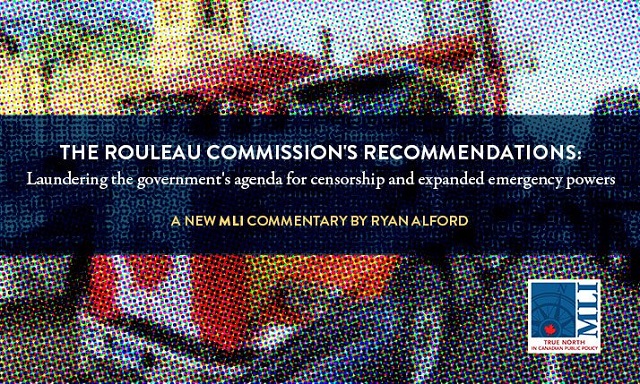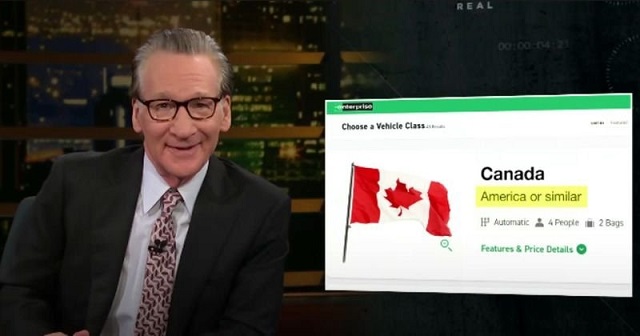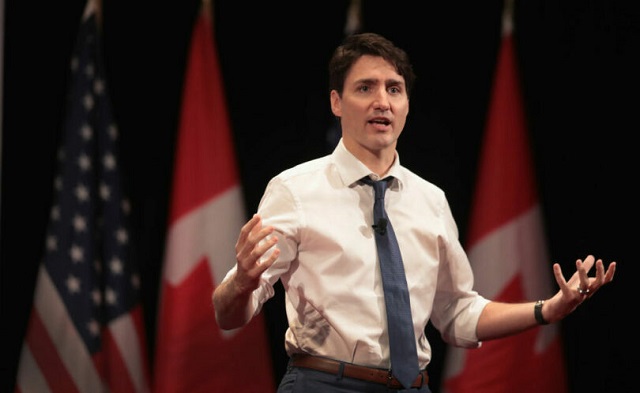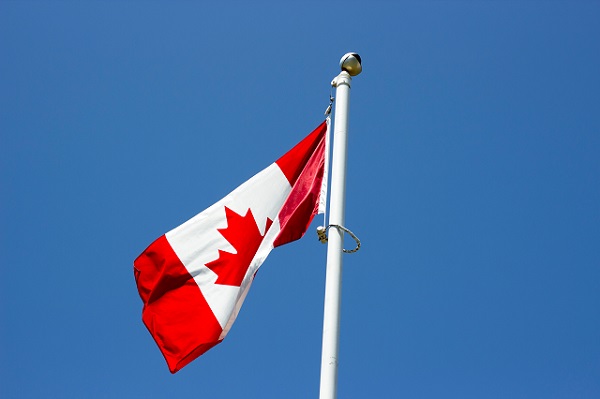COVID-19
The Rouleau Commission’s recommendations: Laundering the government’s agenda for censorship and expanded emergency powers

From the MacDonald Laurier Institute
By Ryan Alford
In this commentary, Ryan Alford examines how the Rouleau Commission’s personnel, agenda, and fundamental assumptions were all determined by Cabinet, the very body whose actions it was charged with assessing.
On August 31, Minister of Public Safety Dominic LeBlanc issued a six month progress report on implementing the recommendations of the Public Order Emergency Commission (POEC), also known as the Rouleau Inquiry. It is notable for what it explicitly notes as being implemented, and for what remains to be implemented without significant comment. That said, it would be an error to begin with a comparison between what the Final Report of the Rouleau Inquiry recommended and what the federal government is now implementing. Rather, the critical point of comparison is between the Order-in-Council establishing the Commission – that is, Commissioner Rouleau’s marching orders from the Government – and the legislative agenda that is now being pursued.
The Emergencies Act itself calls for a mandatory public inquiry into “the circumstances that led to the declaration [of an emergency] being issued and the measures taken for dealing with the emergency.” Before the POEC, civil libertarians had understood this to mean that the mandate of any inquiry would be to examine whether the government had a reasonable basis to conclude threats existed to national security that could not be dealt with under any other Canadian law, and whether the emergency measures taken by the cabinet conformed to the Canadian Charter of Rights and Freedoms. In short, it was always assumed the Inquiry would have a tight focus on whether a national emergency, as defined by law, existed and whether the declaration (and every action taken under it) had been constitutional.
That reassuring assumption proved unfounded. In the Order of April 25, 2022, the Governor General in Council, on the recommendation of the Prime Minister, redefined the meaning of the “circumstances that led to the emergency”, which now included “the impact, role and sources of misinformation and disinformation, including the use of social media”. It also directed the Commissioner to “make recommendations, as pertains to the matters examined in the Public Inquiry, on the use or any necessary modernization of [the Emergencies] Act”.
Thus, cabinet dictated the fundamental assumptions that guided the Rouleau Commission. Two of these assumptions stand out from the others. First, that misinformation and disinformation on social media had a significant impact on the organizers and participants of the Freedom Convoy. Second, that the Emergencies Act might need “modernization”. Both of these premises are highly problematic and should not have been granted at the outset of the hearings (i.e.: prior to the admission of any evidence).
The hearings phase provided ample demonstration of the spuriousness of these assumptions. Witness testimony reiterated that the concerns of Freedom Convoy protestors were practical and political in nature. Many had been directly affected by vaccine mandates that curtailed their ability to work and travel. Others expressed the view that these mandates had expanded the powers of government beyond what was acceptable. While these might not have constituted an indisputable justification for a sustained and disruptive protest, there was no evidence presented in the hearings that the Freedom Convoy protests were predicated chiefly, or even substantially, on social media-borne misinformation or disinformation.
Second, the only testimony from witnesses that supported the notion that the Emergencies Act needs to be modernized came from those closest to the heart of the federal government, namely the National Security and Intelligence Advisor to the Prime Minister and the Clerk and Deputy Clerk of the Privy Council Office (PCO). The documents, chiefly emails, expressing their concerns about the purportedly antiquated requirements for declaring a public order emergency seemed to follow shortly after the Director of CSIS had circulated a memorandum conveying his opinion that these requirements had not been met.
Essentially, when the request to conclude that a public order emergency existed had been rebuffed by CSIS, the RCMP, and, most critically, the Intelligence Bureau of the Ontario Provincial Police, which was at the time coordinating on the ground intelligence collection, senior government bureaucrats started to express concern that the Emergencies Act and the CSIS Act were out of date.
Many observers found this claim unconvincing; not least because, unlike many pieces of public safety-related legislation – for instance, the Criminal Code – neither the Emergencies Act or the CSIS Act had been previously flagged as in need of updating as both are relatively modern pieces of legislation, enacted in 1988 and 1984, respectively. Notably, these laws themselves had been passed in response to the serious abuse of the War Measures Act during the October Crisis of 1970 and, in the decade that followed, the unlawful activities of the National Security Division of the RCMP, as detailed in the final report of the McDonald Commission (1981).
Accordingly, it was not surprising that, in the three decades since the enactment of these two laws, there had been no amendments that would have loosened the legislated restrictions on federal government’s ability to expand its own powers at the expense of Parliament and the provinces. The Order-in-Council nevertheless mandated that the Inquiry consider the issue of the “necessary modernization” of the Emergencies Act, and the Commission continued to take this directive seriously – even after it had become apparent that the argument that modernization was needed had originated in an internal dispute over whether a declaration of a public order emergency during the Freedom Convoy would be unlawful. (All of the police and intelligence agencies consulted by the government had concluded that the statutory and constitutional requirements for the use of the Emergencies Act had not been met).
What is even more problematic is the possibility that Cabinet had made the call to invoke the Emergencies Act on the premise that it was appropriate to measure the facts on the ground in Ottawa against the standard of an “evolved” interpretation of the Act (likely at the urging of senior bureaucrats). This may well have been the same logic employed by Minister of Justice David Lametti. We’ll likely never know for sure, owing to the Prime Minister’s assertion of solicitor-client privilege over a secret memo outlining the Justice Department’s legal argument for invoking the Act, which convinced the Cabinet to come to the opposite conclusion from the one stated in the Director of CSIS’ memorandum of the previous day.
Accordingly, by directing the Rouleau Commission to consider whether the Emergencies Act needed to be modernized, the Cabinet may have been clandestinely requesting that the Inquiry bless its novel (and secret) interpretation of legal definition of a public order emergency. This interpretation would, as such, receive a retroactive justification if the Commission were to conclude that the Minister of Justice had merely been anticipating the legislative changes needed to modernize the Act.
For obvious reasons, this request could not be made explicitly. If the Cabinet did, in fact, rely on the “evolved” definition in a closed-door meeting protected by Cabinet and solicitor-client privilege, this would be a constitutional abomination they’d rather not see come to light. The Emergencies Act specifies a narrow range of conditions that allow the Cabinet to assume the power of Parliament to pass laws – a problematic exemption from the basic principles of responsible government at best. If the Cabinet decided to surreptitiously amend the legislation that allows it to invoke these extra-parliamentary powers, it is effectively asserting the supremacy of the executive over the legislative branch. Cabinet cannot be confined within legal bounds if it reserves for itself a secret power to adjust these bounds outwards at will.
The second assumption embedded in the POEC’s mandate received more explicit treatment in LeBlanc’s progress report. It noted that the Final Report had charged the government with addressing “social media misinformation and disinformation”, and that the Commission had made specific recommendations that “the federal government work with its partners to further study the impact of social media . . . while addressing the serious challenges that misinformation, disinformation, and other online harms present to individuals and Canadian society”. Suffice it to say that Minister LeBlanc’s progress report makes it clear that this particular recommendation is being taken very seriously.
Of course, when the Cabinet directed the Rouleau Commission to provide recommendations related to social media misinformation, it had already reached firm conclusions about the need to implement far-reaching censorship of online expression. However, in purporting to merely be implementing the recommendations of a Public Inquiry, the federal government may be able to divert attention from the fact that some of the most contentious elements of this legislation have already been passed. This includes provisions that would allow the a committee established under the CRTC’s regulatory authority to assess and censor individuals’ social media posts. Additionally, it can point to the recommendations of the Rouleau Commission as a justification for the decision to funnel still more governmental funding to purportedly “neutral” civil society organizations and academic research centres that inevitably take the position that increased governmental censorship is necessary and justifiable. (See, for instance, Ontario Tech University’s Centre on Hate, Bias, and Extremism).
Indeed, this dynamic of finding purportedly neutral sources for highly contentious proposals was present within the Rouleau Commission itself. Having failed to obtain testimony that demonstrated the need for censorship and increased emergency powers in the Inquiry’s evidence phase, the Inquiry’s in-house Research Council commissioned (and paid for) submissions from a number of academics well-known for their advocacy, some of whom were affiliated with and even co-authored their submissions with notoriously politicized and ideologically biased organizations, such as the Canadian AntiHate Network.
Finally, when it came time for the culmination of the policy phase of the Inquiry, the roundtables charged with shaping the Commission’s recommendations were packed with experts with ties to the Trudeau government, notably exTrudeau Foundation CEO Morris Rosenberg. (Rosenberg was also the author of the report commissioned by the Privy Council Office that concluded that foreign interference had not affected the 2021 federal election; Rosenberg’s report concluded, contentiously, that “domestic actors” should also be a subject
of concern.)
On the question of whether the government will propose amending the Emergencies Act, LeBlanc’s progress report is considerably more evasive. This is likely because detaching the definition of a public order emergency from the definition found in the CSIS Act, as Rouleau recommended, would dramatically expand the federal government’s power to declare an emergency. If the legislative amendment tracks the Cabinet’s desires, the Emergencies Act could be triggered by any activity that threatens the “economic security” of Canada. As the more critical policy experts noted at the roundtable (and in their policy recommendations), this definition is practically limitless, as any disruptive protest (or strike, lockout, mass gathering, boycott, etc.) could have an “impact” on the national economy.
Accordingly, it seems likely that, before proposing such an amendment, the government will want to gauge the prevailing winds in Parliament. The surest indicator of unfavourable conditions would be the rigorous assessment of the Special Joint Committee on the Declaration of Emergency, which has equal status under the Emergencies Act with the Public Inquiry, and should not feel any need to defer to its findings – particularly as the Rouleau Commission’s personnel, agenda, and fundamental assumptions were all determined by Cabinet, the very body whose actions it was charged with assessing.
The Special Joint Parliamentary Committee can serve as a neutral judge, and it should exercise independent judgment when compiling its own definitive report. The Committee will be an especially important arbiter of the key issue of whether the federal government, having expanded the scope of its emergency powers in secret, should receive retroactive benediction in the form of a newly amended Emergencies Act, which would encompass responses to “economic threats” (an illusory limitation, to be clear). Such an outcome would make Cabinet, and effectively the Prime Minister, our true sovereign.
About the author
Ryan Alford is a Senior Fellow of the Macdonald-Laurier Institute, a Professor at the Bora Laskin Faculty of Law at
Lakehead University, and a Bencher of the Law Society of Ontario. He was also granted the status of a Party by the Public Order Emergency Commission and appeared in that capacity before the Rouleau Inquiry.
COVID-19
Pfizer reportedly withheld presence of cancer-linked DNA in COVID jabs from FDA, Health Canada

From LifeSiteNews
According to information released by the Epoch Times, Pfizer purposefully failed to advise drug regulators, including Health Canada, the U.S. FDA and the European Medicines Agency, that the cancer-linked SV40 DNA enhancer was present in their experimental COVID shot.
Pharmaceutical giant Pfizer reportedly “chose not to” inform Health Canada, the U.S. Food and Drug Administration and other regulatory agencies that the cancer-linked Polyomavirus Simian Virus 40 (SV40) DNA sequence was in their widely distributed COVID-19 vaccine.
According to information released April 23 by the Epoch Times, Pfizer purposefully failed to advise drug regulators, including Health Canada, the U.S. Food and Drugs Administration, and the European Medicines Agency, that SV40 was present in their experimental COVID shot.
“I understand that there have been internal discussions at CBER [Center for Biologics Evaluation and Research] regarding the presents [sic] of an SV40 enhancer/promoter sequence, noting that its presence is unrelated to the purpose of the Pfizer’s plasmid as a transcription template for their mRNA COVID-19 vaccine,” Dr. Dean Smith, a senior scientific evaluator in Health Canada’s Vaccine Quality Division, wrote in an email to a colleague at the FDA about SV40.
The August email was obtained by an access to information request by the Epoch Times.
“Pfizer has communicated to us recently, that they apparently chose not to mention this information to EMA, FDA or HC at the time of their initial or subsequent submissions,” he added.
Smith noted that Kevin McKernan, a microbiologist and former researcher and team leader for the MIT Human Genome project, and Dr. Phillip J. Buckhaults, who is a professor of cancer genomics as well as the director of the Cancer Genetics Lab at the University of South Carolina, had raised in a public manner earlier this year how SV40 was present in the jabs.
While Health Canada originally told Canadians it was unaware of the SV40 enhancer’s presence, the agency has since confirmed the presence of the monkey-linked DNA sequence known to cause cancer when it was used in old polio vaccines.
SV40 is used to enhance gene transcription when the shots are made. It has been linked to the spread of turbo cancers in those who have been exposed to the virus via contaminated injections.
According to a 2002 study published in the Lancet, there is evidence that links the older polio vaccines, which were filed with SV40 contaminants, to certain forms of cancer.
Polio vaccines from the late 1950s to the early 1960s were all contaminated with SV40, after it was discovered that the virus was present in the monkey kidney cells which vaccine makers used to create the shots.
The authors of the 2002 study claim that the SV40-contaminated polio vaccine may have caused up to half of the 55,000 cases of non-Hodgkin’s lymphoma diagnosed each year.
SV40, according to the late vaccine developer Dr. Maurice Hilleman, was put in the polio vaccine and then put into wide circulation by Big Pharma company Merck inadvertently.
Unfortunately, this is not the first evidence that Pfizer hid the presence of SV40 from drug regulators.
According to Dr. Janci Lindsay, who works as the director of toxicology and molecular biology for Toxicology Support Services, Pfizer did not disclose the presence of SV40 “promoters” to both Health Canada and the U.S. Food and Drug Administration, as well as the European Medicines Agency.
She said, as reported in The Epoch Times, that the drug company “hid them.”
“So it’s not just the fact that they’re there, it’s the fact that they were purposefully hidden from the regulators,” she noted.
The news of Pfizer’s purposeful withholding of information comes as adverse effects from the first round of COVID shots have resulted in a growing number of Canadians who have filed for financial compensation over alleged injuries from the jabs, via Canada’s Vaccine Injury Program (VISP).
Thus far, some VISP has already paid over $6 million to those injured by COVID injections, with some 2,000 claims remaining to be settled.
Additionally, a recent study done by researchers with Canada-based Correlation Research in the Public Interest showed that 17 countries have found a “definite causal link” between peaks in all-cause mortality and the fast rollouts of the COVID shots as well as boosters.
Alberta
Red Deer Doctor critical of Alberta’s COVID response to submit report to Danielle Smith this May

From LifeSiteNews
Leading the task force is Dr. Gary Davidson, who was skeptical of mandates at the time.
Alberta Premier Danielle Smith will soon be receiving a little-known report she commissioned which tasked an Alberta doctor who was critical of the previous administration’s handling of COVID to look into how accurate the province’s COVID data collection was, as well as the previous administration’s decision-making process and effectiveness.
As noted in a recent Globe and Mail report, records it obtained show that just less than one month after becoming Premier of Alberta in November of 2022, Smith tasked then-health minister Jason Copping to create the COVID data task force.
Documents show that the Alberta government under Smith gave the new task force, led by Dr. Gary Davidson – who used to work as an emergency doctor in Red Deer, Alberta – a sweeping mandate to look at whether the “right data” was obtained during COVID as well as to assess the “integrity, validity, reliability and quality of the data/information used to inform pandemic decisions” by members of Alberta Health Services (AHS).
As reported by LifeSiteNews in 2021, Davidson said during the height of COVID that the hospital capacity crisis in his province was “created,” was not a new phenomenon, and had nothing to do with COVID.
“We have a crisis, and we have a crisis because we have no staff, because our staff quit, because they’re burned out, they’re not burnt out from COVID,” Davidson said at the time.
Davidson also claimed that the previous United Conservative Party government under former Premier Jason Kenney had been manipulating COVID statistics.
In comments sent to the media, Smith said that in her view it was a good idea to have a “contrarian perspective” with Davidson looking at “everything that happened with some fresh eyes.”
“I needed somebody who was going to look at everything that happened with some fresh eyes and maybe with a little bit of a contrarian perspective because we’ve only ever been given one perspective,” she told reporters Tuesday.
“I left it to [Davidson] to assemble the panel with the guidance that I would like to have a broad range of perspectives.”
Smith took over from Kenney as leader of the UCP on October 11, 2022, after winning the leadership of the party. The UCP then won a general election in May 2023. Kenney was ousted due to low approval ratings and for reneging on promises not to lock Alberta down during COVID.
After assuming her role as premier, Smith promptly fired the province’s top doctor, Deena Hinshaw, and the entire AHS board of directors, all of whom oversaw the implementation of COVID mandates.
Under Kenney, thousands of nurses, doctors, and other healthcare and government workers lost their jobs for choosing to not get the jabs, leading Smith to say – only minutes after being sworn in – that over the past year the “unvaccinated” were the “most discriminated against” group of people in her lifetime.
As for AHS, it still is promoting the COVID shots, for babies as young as six months old, as recently reported by LifeSiteNews.
Task force made up of doctors both for and against COVID mandates
In addition to COVID skeptic Dr. Gary Davidson, the rather secretive COVID task force includes other health professionals who were critical of COVID mandates and health restrictions, including vaccine mandates.
The task force was given about $2 million to conduct its review, according to The Globe and Mail, and is completely separate from another task force headed by former Canadian MP Preston Manning, who led the Reform Party for years before it merged with another party to form the modern-day Conservative Party of Canada.
Manning’s task force, known as the Public Health Emergencies Governance Review Panel (PHEGRP), released its findings last year. It recommend that many pro-freedom policies be implemented, such as strengthening personal medical freedoms via legislation so that one does not lose their job for refusing a vaccine, as well as concluding that Albertans’ rights were indeed infringed upon.
The Smith government task force is run through the Health Quality Council of Alberta (HQCA) which is a provincial agency involved in healthcare research.
Last March, Davidson was given a project description and terms of reference and was told to have a final report delivered to Alberta’s Health Minister by December of 2023.
As of now, the task force’s final report won’t be available until May, as per Andrea Smith, press secretary to Health Minister Adriana LaGrange, who noted that the goal of the task force is to look at Alberta’s COVID response compared to other provinces.
According to the Globe and Mail report, another person working on the task force is anesthetist Blaine Achen, who was part of a group of doctors that legally challenged AHS’s now-rescinded mandatory COVID jab policy for workers.
Some doctors on the task force, whom the Globe and Mail noted held “more conventional views regarding the pandemic,” left it only after a few meetings.
In a seeming attempt to prevent another draconian crackdown on civil liberties, the UCP government under Smith has already taken concrete action.
The Smith government late last year passed a new law, Bill 6, or the Public Health Amendment Act, that holds politicians accountable in times of a health crisis by putting sole decision-making on them for health matters instead of unelected medical officers.
-

 Censorship Industrial Complex2 days ago
Censorship Industrial Complex2 days agoNow We Are Supposed to Cheer Government Surveillance?
-

 Alberta2 days ago
Alberta2 days agoRed Deer Doctor critical of Alberta’s COVID response to submit report to Danielle Smith this May
-

 Business1 day ago
Business1 day agoTaxpayers criticize Trudeau and Ford for Honda deal
-

 Business1 day ago
Business1 day agoDon’t be fooled by high-speed rail
-

 Alberta1 day ago
Alberta1 day agoActivity-Based Hospital Funding in Alberta: Insights from Quebec and Australia
-

 Business1 day ago
Business1 day agoUN plastics plans are unscientific and unrealistic
-

 Addictions1 day ago
Addictions1 day agoBritish Columbia should allow addicts to possess even more drugs, federal report suggests
-

 Fraser Institute2 days ago
Fraser Institute2 days agoBill Maher is right about Canadian health care







